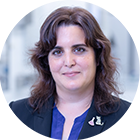The Thinking Institute at the University of Vigo
The Thinking Institute at the University of Vigo
The Thinking Institute aims to bring together scientists from around the world to discuss science with an open mind, so that new research directions may emerge from a multidisciplinary environment. Organized by Prof. Luis Liz-Marzán and supported by CINBIO, this second edition will take place on June 7th, 8th and 9th, 2023, with a splendid list of speakers. Attendance to lectures will be free but registration will be required. Students and researchers from CINBIO will have the opportunity to meet and discuss with the invited speakers, who will also meet privately for further joint thinking.
Confirmed speakers:
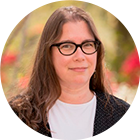
Catherine J. Murphy
Title:
“Digging in the dirt: Organic ligands on gold nanocrystal surfaces”
Afiliation:
Larry R. Faulkner Endowed Chair in Chemistry, University of Illinois at Urbana-Champaign
Biography:
Professor Murphy received two B.S. degrees, one in chemistry and one in biochemistry, from the University of Illinois in 1986. She received her Ph.D. from the University of Wisconsin in 1990. From 1990-1993, she was first an NSF and then an NIH postdoctoral fellow at the California Institute of Technology. From 1993-2009 Professor Murphy was a faculty member in the Department of Chemistry and Biochemistry at the University of South Carolina. In August 2009 she joined the faculty of the Department of Chemistry at the University of Illinois.
https://scholar.google.com/citations?hl=en&user=MlZ4SzAAAAAJ
https://chemistry.illinois.edu/murphycj
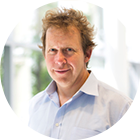
Nicholas Kotov
Title:
"Chirality Continuum in Nanostructures"
Afiliation:
University of Michigan
Biography:
Nicholas A. Kotov received his degrees from the Moscow State University with his diploma and PhD studies centered on bioinspired harvesting of solar energy. His postdoctoral studies in Syracuse University encompassed the synthesis and self-assembly of biomimetic nanocomposites. After taking a position of an Assistant Professor at Oklahoma State University he expanded the field of biomimetic processes and materials by establishing a research program on self-assembly of nanostructures. Nicholas is currently holding the rank of Irving Langmuir Distinguished University Professor of Chemical Sciences and Engineering at the University of Michigan. He heads the laboratory and international team of scientists working on practical implementations and theoretical foundations of Biomimetic Nanostructures. Self-assembly and optical properties of chiral nanoparticles and their superstructures represent a focal point for the continuum of bioinspired nanoscale materials with significance to physics, chemistry, biology, and medicine. Nicholas is a co-founder of five startup companies and a passionate advocate for scientists with disabilities.
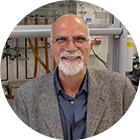
Maurizio Prato
Title:
“Quantasome Nanoparticles for Artificial Photosynthesis”
Afiliation:
CIC biomaGUNE and University of Trieste
Biography:
Carbon Nanobiotechnology Group Leader at CIC biomaGUNE. Research line: Development of functional carbon-based interfaces with enhanced performance in the field of biosensing and diagnostics. Federchimica Prize, Association of the Italian Chemical Industries (1995). National Prize for Research, Italian Chemical Society (2002). Ciamician-Gonzalez Prize, Spanish Royal Society of Chemistry (2008). Nominee for the Descartes Prize for Excellence. Previous research experience in USA (Yale University, University of California), Italy (University of Trieste), France (Ecole Normale Superieure, Université de Strasbourg), Belgium (Université de Namur) and China (Xi'an Jiaotong University). Doctor in Chemistry (1978) from University of Padova, Italy, Honoris Causa Laurea in Materials Science and Technology at the University of Roma Tor Vergata (2014), Honoris Causa PhD in Chemistry, Universidad de Castilla-La Mancha (2016).
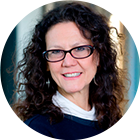
Mónica Olvera de la Cruz
Title:
“Functional Nanoparticles”
Afiliation:
Lawyer Taylor Professor of Materials Science and Engineering, Northwestern University https://innobiome.csic.es/
Biography:
Olvera de la Cruz obtained her B.A. in Physics from the UNAM, Mexico, in 1981, and her Ph.D. in Physics from Cambridge University, UK, in 1985. She has been a faculty member at Northwestern University since 1986. From 1995-97, she worked as a Senior Staff Scientist at the Commissariat a l’Energie Atomique, Centre de’Etude, Saclay, France. Olvera de la Cruz is a member of the U.S. National Academy of Sciences as well as the American Philosophical Society and a fellow of the American Academy of Arts and Sciences and the American Physical Society. She directed the Northwestern Materials Research Center from 2006–2013, which she grew in research, funding level and education, and expanded it by developing the Center for Scientific Studies in the Arts (NU-ACCESS), an outreach program aimed at advancing the role of science and engineering in society. She is the Director of the Center for Computation and Theory of Soft Materials (CCTSM) at Northwestern University.

Joerg Lahann
Title:
“The Taxonomy of Nanofiber Forests” “Brain-targeting Nanoparticles”
Afiliation:
University of Michigan
Biography:
PhD in Macromolecular Chemistry, RWTH Aachen, 1998. MS in Chemistry, RWTH Aachen, 1995. BS in Chemistry, University of Saarland, 1993. Experience: Wolfgang Pauli Collegiate Professor of Chemical Engineering, University of Michigan, 2019-Present; Director of Biointerfaces Institute, University of Michigan, 2012-Present; Co-Director, Institute of Functional Interfaces, Karlsruhe Institute of Technology, Germany, 2009-Present
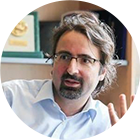
Francesco Stellacci
Title:
“Natural Nanoparticles”
Afiliation:
Ecole Polytechnique Fédérale de Lausanne
Biography:
Francesco Stellacci graduated in Materials Engineering at the Politecnico di Milano in 1998 with a thesis on photochromic polymers with Prof. Giuseppe Zerbi and Mariacarla Gallazzi. In 1999 he moved to the Chemistry Department of the University of Arizona for as a post-doc in the group of Joe Perry in close collaboration with the group of Seth Marder. In 2002 he moved to the Department of Materials Science and Engineering at the Massachusetts Institute of Technology as an assistant professor. He was then promoted to associate without (2006) and with tenure (2009). In 2010 he moved to the Institute of Materials at EPFL as a full Professor. He holds the Alcan EP Chair. Francesco was one of the recipients of the Technology Review TR35 "35 Innovator under 35" award in 2005, and the Popular Science Magazine "Brilliant 10" award in 2007. He has been a Packard Fellow starting 2005.
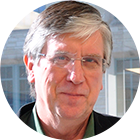
Michael Bedzyk
Afiliation:
Northwestern University.
Title:
“X-ray atomic-scale structure and chemistry of supported nanostructures”
Biography
His research program includes the development of novel X-ray probes and the characterization of surface, interface, and thin-film structures with atomic resolution. He conducts experiments using both in-house and synchrotron X-ray facilities. The latter have greatly enhanced chemical and structural sensitivity for studying systems as dilute as one-hundredth of an atomic monolayer. He also developed a number of methods for generating X-ray standing waves with differing characteristic length scales. He uses these periodic X-ray probes to pinpoint the lattice location of adsorbate atoms on crystalline surfaces, to measure strain within epitaxially grown semiconductor and ferroelectric thin films, and to locate heavy atoms within ordered ultrathin organic films.
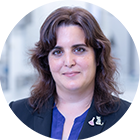
Sara Núñez-Sánchez
Title:
"Exploring new horizons in all-organic photonics inspired by quantum biology"
Afiliation:
CEEC Individual Fellow, Centro de Física-UMinho-UPorto, University of Minho
Biography:
Núñez-Sánchez is an expert on functional materials focused on photonic applications. Her experience ranges from theory of nanophotonics, plasmonics and metasurfaces to solar cells, clean room processing and supramolecular chemistry.PhD in Material Science from the UAM-CSIC followed by a postdoctoral experience of 5 years in the United Kingdom (Exeter & Bristol). After 6 years of chemistry exploration at the Functional NanoBioMaterials Group of the University of Vigo, in 2023, she joined the Centro de Física - UMinho – Uporto. At UMinho she leads the research on organic materials for photonics inspired by quantum biology phenomena at the molecular level.
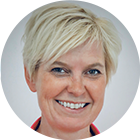
Sara Bals
Title:
Pushing the boundaries of electron tomography: a rollercoaster ride with a twist in the end
Afiliation:
EMAT and NanoCentre of Excellence, University of Antwerp, Groenenborgerlaan 171, 2020 Antwerp, Belgium
Biography:
Sara Bals was born in Antwerp (Belgium) in 1977 and studied Physics at the University of Antwerp from 1995-1999. She obtained her PhD in 2003 with greatest distinction and special honours by the jury. From 2003-2004, she did postdoctoral work at the National Center of Electron Microscopy in Berkeley, USA. The focus of her work was the development of electron tomography for materials science. After returning to UAntwerp, she became an Assistant Professor in the Physics Department. In 2018 she was promoted to Full Professor. She is currently the spokesperson of EMAT, consisting of 7 principal investigators, about 25 postdoctoral researchers and more than 30 PhD students. Moreover, she is the coordinator of the “Nanolab” Centre of Excellence at the host institution, composed of 6 research groups. Sara Bals is an expert in the application and development of electron tomography for functional nanomaterials. By combining state-of-the-art electron microscopy with advanced 3D reconstruction algorithms, the positions and chemical nature of individual atoms in a nanomaterial are measured. These measurements are now also performed under realistic conditions (heating, liquid or gas flow experiments). She was awarded an ERC Starting grant in 2012, an ERC Consolidator grant in 2018, received the award "Laureate of the Academy for Natural Sciences" by the Royal Flemish Academy in 2016, became Francqui research professor in 2017 and was elected as member of the Royal Flemish Academy of Belgium for Science and the Arts in 2020 and of the Academia Europaea in 2022. She received the European Microscopy Award in 2020 and the ACS Nano Lectureship award in 2021. Since 2023 she is an associate editor with ACS Nano.

Lakshminarayana Polavarapu
Title:
"Colloidal Lead Halide Perovskite Nanocrystals: Emerging Semiconductor Light Sources"
Afiliation:
CINBIO, Universidade de Vigo
Biography:
Dr. Polavarapu is the principal investigator of the Materials Chemistry and Physics Gorup (MCPG) at CINBIO. He obtained an MSc in Chemistry from the University of Hyderabad (India) in 2005 and his PhD in Physical Chemistry from the National University of Singapore in 2011. After being a postdoctoral fellow at CIC biomaGUNE (bionanoplasmonics group) and University of Vigo (colloid chemistry group) in Spain, he joined the Chair for Photonics and Optoelectronics at the Ludwig-Maximilians-University of Munich (Germany) in 2015 as an Alexander von Humboldt postdoctoral fellow and later continued as a junior group leader until May 2020. He is a coauthor of 90 publications with an h-index of 56. His publications have received around 12000 citations. He is an Editorial board member for Nanoscale, and Nanoscale Advances, Advanced Physics Research, and Scientific Reports, a Nature Research journal and he was a guest editor for the themed collection on “Halide perovskite NCs” published in ‘Nanoscale’ (RSC Journal) in 2019. His current research interests include shape-controlled synthesis and self-assembly of metal and semiconductor nanocrystals for exploring their optical properties as well as a wide range of potential applications such as sensors, LEDs, photovoltaics and photocatalysis.
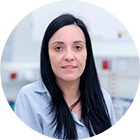
Margarita Vázquez González
Title:
Soon
Afiliation:
CINBIO, Universidade de Vigo
Biography:
Margarita Vázquez-González obtained her PhD in Chemistry from Universidade de Santiago de Compostela (Spain) in 2016. From 2016 to 2021 she held a postdoctoral position at Hebrew University of Jerusalem (Israel). Currently, she is a Juan de la Cierva Incoporacion fellow at CINBIO. Her research interests focus on the development of functional materials, including stimuli-responsive DNA-based materials, such as hydrogels and drug carriers, and nanomaterials with catalytic properties, specifically nanozymes.
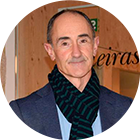
Luis Liz Marzán
Afiliation:
CIC biomaGUNE and CINBIO, Universidade de Vigo
Title:
“Exploring cell behavior in complex model systems through nanoplasmonics”
Biography
Ikerbasque Research Professor, group leader of the BioNanoplasmonics Lab and scientific Director of CIC biomaGUNE (2013-2022). Research line: Nanoparticle synthesis and assembly, nanoplasmonics, and development of nanoparticle-based sensing and diagnostic tools. Previous research experience in the University of Vigo, University of Utrecht, Tohoku University, University of Michigan, University of Melbourne, University of Hamburg and Max Planck Institute of Colloids and Interfaces. Doctor in Chemistry 1992 from the University of Santiago de Compostela.
REGISTRATION:
Participation is free but registration is needed. LOCATION: Edificio Miralles, Sala 1 (Campus universitario de Vigo)
The Thinking Institute at the University of Vigo, Second Edition
Rector of the University of Vigo
Soon
“Digging in the dirt: Organic ligands on gold nanocrystal surfaces”
“Exploring new horizons in all-organic photonics inspired by quantum biology”
"Chirality Continuum in Nanostructures"
“Quantasome Nanoparticles for Artificial Photosynthesis”
“Pushing the boundaries of electron tomography: a rollercoaster ride with a twist in the end”
“Colloidal Lead Halide Perovskite Nanocrystals: Emerging Semiconductor Light Sources”
“Natural Nanoparticles”
“X-ray atomic-scale structure and chemistry of supported nanostructures”
“Functional Nanoparticles”
"Catalysis in confined environments"
“Exploring cell behavior in complex model systems through nanoplasmonics”

